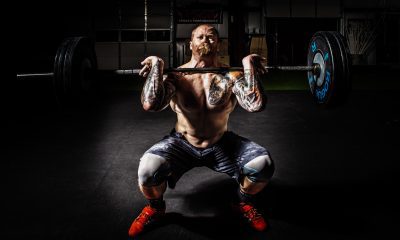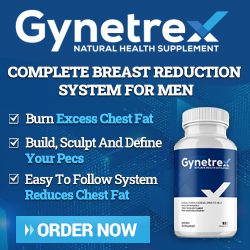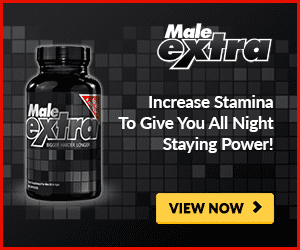Workout
5 Impactful Workouts to Build Your Lagging Body Parts

Do you think you have a perfectly balanced and symmetrical physique? Is there a frustrating part of your body that does not grow? There will always be a lagging body part or a specific muscle group that you would like to improve. The good thing is that you are not alone in this journey, and here you will find some Impactful Workouts for your progress.
Focus More on The Lagging Body Parts:
Before this matter, it is essential to focus more of your efforts on lagging body parts. That way, you will successfully build and have a good physique. It will also be a good idea to follow some advice from a doctor. The following are the five Impactful Workouts that will help sculpt a well-rounded and complete body.
Check out our Training Program: 10 Week Program & 5,000 Rep Arm Specialization Program
#1─ Pump Up your Frequency:
Following high-frequency and targeted training will be essential to improve your body part that has fallen behind.
If you will like it bringing up a lagging muscle group, it is worth noting training two to three times a week. In one day, you may go heavy with the lower repetitions.
And then switch up the workout by turning to lighter weights. Just increase the volume as well.
If you will like it driving your muscle growth, increasing the training volume and adding some stimulation is essential.
If you will power up your body part, add some workouts. That way, you will be able to focus on your body part. Allow some forty-eight hours of rest in between sessions.
In addition to what you need to remember, ensure you will not go through the motion. You will need to slow down. Feel each part of the repetition from the beginning until the end. This will drive more blood into particular muscle tissue.
#2─ Change the First Exercise Being Followed:
If you stick to the same exercise routine, it will only stop you from increasing your gains. However, this does not necessarily mean that you will never need it scrapping your routine. Minor adjustments will already make a big difference.
This way, you will be able to break through the growth wall. You may as well begin your workout sessions, considering your muscle is not growing anymore. Start with exercises every time you focus on each muscle with the maximum energy.
If you bring up the boulder shoulders, never revert to the dumbbell presses to kick off each lift. It will be a lot better to start with the standing barbell press, Arnold presses, and any compound variation that will drive change.
#3─ Connect The Muscle to Your Mind:
If you do not notice any significant difference with your specific muscle group, it may be attributed to the fact that you do not activate the maximum way possible. You must evaluate your technique to building up your lagging body parts.
When you realize you can contact or squeeze your muscle more effectively, you will be on your way to shaping it. You can easily allow the muscle and mind connection to slip.
This is especially true if you pile on the plates and lift heavy weights. You will need to grow some more and newer muscles. Lower the weight and slow down the tempo that you follow. Squeeze every repetition being your priority.
#4─ Adjust or Add Repetitions:
According to the fitness model named Jimmy Everett, building up your lagging body parts is about getting in extra repetitions. If you put a lot of stress on your muscle group, expect it to become a lot bigger. You could add up some stress to be able to increase the pre-set volume.
This could also be possibly done by working in a high-rep range. If you work at about six to eight repetitions for the back, it will be just right to explore hypertrophy-related work in an eight to twelve range.
Master about six to eight repetitions with a specific weight. Keep the weight just the same. Try to squeeze out a lot of repetitions with it. If the strength is quite at a level, you will need to drop the weight following a small percentage. You will need to do this before you up to your pre-set repetitions.
#5─ Add Some Single-Limb Work:
If the lagging body parts are your legs or arms, you will need to add up some single-limb work. That way, you will be able to correct this sort of imbalance.
You will need to follow some unilateral isolation work which could be your favorite technique. If your left quad is lagging, keep focusing on single-leg leg presses, single-leg leg extensions, and single-leg squats.
If you focus on machine, barbell, and bilateral exercises, it will be necessary to add some single-limb work. This will help balance your strength and musculature.
Must Read: How To Do One Leg Squat
Follow All the Essential Workouts Mentioned Above:
You will need to follow all the impactful workouts mentioned above for your own sake. That way, you can improve some of your body parts. And thus, you will successfully feel good as well.
Now, you have learned more about the 5 impactful workouts to build all your lagging body parts!
Bodybuilding
Demystifying Hypertrophy Training

Hypertrophy training, often referred to as bodybuilding training, is a method focused on increasing muscle size and definition through targeted exercises and specific training techniques. Professional bodybuilders have mastered the art of hypertrophy training to sculpt their bodies into peak physical condition.
At its core, hypertrophy training involves lifting weights at a moderate to high intensity for a moderate number of repetitions. The goal is to create micro-tears in the muscle fibers, which then repair and grow stronger and larger during the recovery process. This leads to muscle hypertrophy or an increase in muscle size.
Understanding the basics of hypertrophy training involves knowing how to manipulate variables such as sets, reps, rest periods, tempo, and intensity. By adjusting these factors, individuals can tailor their workouts to target specific muscle groups and achieve optimal results.
Proper nutrition and adequate rest are also crucial components of hypertrophy training as muscles need sufficient fuel and time to recover and grow. Consistency in training and adherence to a well-rounded program are key pillars in unlocking the full potential of hypertrophy training.
Must Read: The Ultimate Chain and Plate Curls for Pumping Biceps
By demystifying hypertrophy training and embracing its principles with dedication and focus, individuals can effectively work towards achieving their desired physique goals while enhancing overall strength and endurance.
Principles of Hypertrophy Training
When you engage in strength training, you put strain on your muscles. This stress prompts the body to repair and adapt, resulting in an increase in muscle fibers. Here are the basics about this form of training you need to familiarise with:
Training Frequency
For new bodybuilders, a frequency of 3-4 times per week is often recommended to allow for sufficient recovery between sessions. Professional bodybuilders may train more frequently, sometimes up to 5-6 times per week, as their bodies have adapted to higher training volumes over time.
Intensity and Volume: New bodybuilders typically start with moderate intensity (around 65-75% of their one-rep max) and moderate volume (3-4 sets of 8-12 reps per exercise). Professional bodybuilders often incorporate higher intensities (75-85% of one-rep max) and higher volumes (4-6 sets of 8-15 reps per exercise) to continue stimulating muscle growth.
Exercise Selection
Both new and professional bodybuilders focus on compound exercises (e.g., squats, deadlifts, bench press) that target multiple muscle groups simultaneously to maximize muscle recruitment and overall hypertrophy. However, professionals may incorporate more isolation exercises to target specific muscles or muscle groups that need extra attention.
Progressive Overload
Both groups prioritize progressive overload, which involves gradually increasing the weight, reps, or sets over time to continue challenging the muscles and promoting growth. This can be achieved through methods such as increasing resistance, shortening rest periods, or varying exercise techniques.
Nutrition
Both new and professional bodybuilders emphasize the importance of nutrition for muscle growth and recovery. This includes consuming an adequate amount of protein to support muscle repair and synthesis, as well as sufficient carbohydrates and fats for energy and overall health.
Rest and Recovery
Adequate rest and recovery are crucial for hypertrophy training. Both new and professional bodybuilders prioritize getting enough sleep (7-9 hours per night) and incorporating rest days into their training schedules to allow muscles to repair and grow.
Supplementation
While both new and professional bodybuilders may use supplements to support their training and nutrition goals, professionals may have more sophisticated supplementation protocols tailored to their specific needs and goals. We recommend supplements such as protein powders, creatine, branched-chain amino acids (BCAAs), and pre-workout formulas.
Monitoring and Adjustments
Professional bodybuilders often closely monitor their progress through measurements such as body weight, body composition, and strength levels. Based on these assessments, they make adjustments to their training, nutrition, and supplementation protocols to continually progress towards their goals.
Arnold Schwarzenegger's Hypertrophy Workout Routine
Arnold Schwarzenegger's volume workout is a legendary approach to hypertrophy training that he popularized during his bodybuilding career. Here's an explanation of how his workout relates to hypertrophy training:
High Volume
Schwarzenegger's training program was characterized by high volume, involving a large number of sets and reps per workout. This high volume stimulates muscle growth by subjecting the muscles to prolonged tension and metabolic stress, both of which are key factors in hypertrophy.
Multiple Sets and Reps
Each exercise in Schwarzenegger's workout typically included multiple sets (often 4-5 sets) with a moderate to high number of reps (8-12 reps). This approach allows for ample time under tension, which is essential for stimulating muscle growth and hypertrophy.
Compound and Isolation Exercises
Schwarzenegger's workout included a combination of compound exercises (e.g., squats, bench press, deadlifts) and isolation exercises (e.g., bicep curls, tricep extensions) to target various muscle groups from different angles. Compound exercises help to maximize muscle recruitment, while isolation exercises allow for targeted muscle stimulation and hypertrophy.
Frequency
Schwarzenegger typically trained each muscle group 2-3 times per week, allowing for sufficient frequency to stimulate muscle growth while also providing adequate recovery time between sessions. This frequency helps to maximize hypertrophy by consistently exposing the muscles to growth-inducing stimuli.
Intensity Techniques
Schwarzenegger often incorporated intensity techniques such as drop sets, supersets, and forced reps into his workouts to further increase the intensity and stimulate muscle growth. These techniques help to push the muscles beyond their normal limits, triggering adaptations that lead to hypertrophy.
Periodization
Schwarzenegger employed periodization principles in his training, alternating between phases of higher volume and lower volume to prevent plateaus and continue making progress. This periodization strategy helps to optimize muscle growth by varying training stimuli over time.
Mind-Muscle Connection
Schwarzenegger emphasized the importance of the mind-muscle connection, focusing on contracting and feeling the target muscles working during each repetition. This approach helps to maximize muscle fiber recruitment and engagement, enhancing the effectiveness of each exercise for hypertrophy.
Nutrition and Recovery
In addition to his training program, Schwarzenegger paid close attention to his nutrition and recovery strategies to support muscle growth and hypertrophy. Adequate protein intake, proper hydration, and sufficient rest are essential components of any hypertrophy-focused training program.
Overall, Schwarzenegger's volume workout is a comprehensive approach to hypertrophy training that incorporates high volume, frequency, intensity techniques, and periodization to maximize muscle growth and achieve an impressive physique.
Also Read: Why Trenbolone Remains A Beast In The Market
10 Groups of Athletes That Can Benefit from Hypertrophy Workouts
We have prepared for you 10 groups of athletes that should consider hypertrophy training
1. Combat Sports Athletes
Martial artists, boxers, and other combat sports athletes can enhance their power and endurance through hypertrophy training.
2. Track and Field Athletes
Sprinters, jumpers, and throwers can improve their explosive strength by including hypertrophy training in their regimen.
3. Football/Soccer Players
Both American football players and soccer players can benefit from hypertrophy training to increase muscle mass and strength.
4. Gymnasts
Building lean muscle mass through hypertrophy training can help gymnasts improve their strength-to-weight ratio for better performance.
5. Swimmers
Swimmers can enhance their power in the water by incorporating hypertrophy exercises to strengthen key muscle groups.
6. Cyclists
While endurance is crucial for cyclists, adding hypertrophy training can boost leg strength and overall performance on the bike.
7. Basketball Players
Building muscle through hypertrophy training can improve basketball players' agility, jumping ability, and overall athleticism on the court.
8. CrossFit Athletes
CrossFit enthusiasts looking to excel in competitions can benefit from hypertrophy training to increase overall strength and muscular endurance.
9. Triathletes
Incorporating hypertrophy exercises into triathletes' routines helps prevent injuries by strengthening muscles that support joints during long-distance races.
10. Powerlifters
While powerlifting focuses on maximal strength lifts, including some hypertrophy work can aid in building a solid muscular foundation for lifting heavy weights more efficiently.
By tailoring a specific hypertrophy program to suit each group's athletic needs and goals, these athletes have the opportunity to optimize their performance levels while reducing the risk of injury associated with repetitive movements in sports-specific activities.
Final Thoughts
By understanding the underlying principles of progressive overload, volume, intensity, and frequency, individuals can tailor their training programs to effectively stimulate muscle growth. Whether you're a novice or a seasoned athlete, hypertrophy training offers a structured framework for optimizing muscle hypertrophy and sculpting a physique that reflects dedication, consistency, and strategic planning.
Embracing the science behind hypertrophy training empowers you as an individual to surpass limitations, break plateaus, and unlock their full potential in pursuit of their fitness aspirations. With proper guidance, commitment, and perseverance, anyone can harness the transformative power of hypertrophy training to sculpt a stronger, more resilient, and aesthetically pleasing physique.
Related Article: Post Cycle Therapy Vs. B&C: Which is Best for You?
Bodybuilding
The Importance of Scaptions in Female Athletes

Scaptions, also known as "scapular activations," play a crucial role in bodybuilding, especially for female athletes looking to enhance their performance and sculpt their physique.
Scaptions refer to exercises or movements that target the muscles around the scapula or shoulder blades. These exercises are essential for building a strong and stable foundation for various upper body movements, such as bench presses, rows, and overhead presses.
Incorporating scaption exercises into a workout routine can help improve shoulder stability, prevent injuries, and enhance overall strength and muscle development in the upper body. Some popular scaption exercises include front raises, lateral raises, and prone horizontal abduction.
When it comes to female athletes, focusing on proper scaption techniques can not only improve performance but also contribute to injury prevention. It is important to approach scaption exercises with proper form and control to target the intended muscles effectively.
For best results in incorporating scaption exercises into a bodybuilding regimen for female athletes, it is recommended to work with a qualified fitness trainer or coach who can tailor a program based on individual goals and fitness levels. Remember that consistency and progressive overload are key factors in maximizing the benefits of scaptions in bodybuilding routines.
Related Article: 10 Week Program & 5,000 Rep Arm Specialization Program
Target Muscles for Scaptions
When performing scaption exercises, several key muscles are targeted to help improve strength and stability in the shoulders and upper body. The primary muscles engaged during scaption exercises include the deltoids, specifically the middle deltoid, as well as the supraspinatus muscle.
The middle deltoid is responsible for lifting the arms sideways away from the body in a scapular plane, which is the primary movement pattern of scaption exercises. Strengthening this muscle can help improve shoulder stability and support proper posture.
Additionally, the supraspinatus muscle, which is part of the rotator cuff group of muscles, plays a crucial role in stabilizing the shoulder joint during scaption movements. Strengthening this muscle can help prevent injuries and improve overall shoulder function.
Incorporating scaption exercises into your workout routine can target these important muscles and contribute to improved shoulder strength and stability. By focusing on these specific muscle groups during scaption movements, you can enhance your overall upper body strength and reduce the risk of shoulder injuries.
Middle Deltoid
The middle deltoid is one of the three heads of the deltoid muscle, located in the shoulder. It is responsible for abduction of the arm, meaning it moves the arm away from the body laterally.
During scaption exercises, particularly when performed with dumbbells or cables, the middle deltoid is heavily engaged as it works to lift the arms from the sides to a position where they are slightly forward of the body, roughly at a 30-45 degree angle. Strengthening the middle deltoid contributes to shoulder width and overall shoulder aesthetics.
Trapezius
The trapezius muscle is a large, triangular muscle that extends from the base of the skull down to the middle of the back and across the shoulders. It is involved in several movements of the shoulder girdle, including elevation, retraction, and depression of the scapula (shoulder blade).
While performing scaption exercises, particularly when performed with proper form and control, the trapezius muscles are activated to stabilize and support the shoulders and scapulae throughout the movement. Strengthening the trapezius can improve posture, shoulder stability, and overall upper body strength.
Serratus Anterior
The serratus anterior muscle is located on the lateral surface of the rib cage, between the ribs and the scapulae. It is composed of finger-like projections that attach to the underside of the scapula and help to pull it forward around the rib cage, contributing to movements such as protraction and upward rotation of the scapula.
During scaption exercises, particularly when performed with proper scapular movement and stabilization, the serratus anterior muscles are engaged to assist in the controlled movement of the scapulae as the arms are raised. Strengthening the serratus anterior can improve scapular stability, shoulder function, and overall upper body mobility.
Procedure to Perform Scaptions
Here's an elaborate procedure for performing scaptions:
Equipment Needed
Dumbbells or resistance bands
Exercise mat (optional)
Procedure
Setup
Begin by standing with your feet hip-width apart, holding a dumbbell in each hand at your sides. Ensure your core is engaged and your shoulders are relaxed.
Starting Position: With palms facing inward, lift the dumbbells in front of you to shoulder height, keeping a slight bend in your elbows. This is your starting position.
Scaption Movement
Slowly raise the dumbbells at a 45-degree angle away from your body, maintaining a slight bend in your elbows.
Keep your arms straight as you lift the dumbbells, leading with your thumbs and keeping your wrists neutral.
Focus on engaging your shoulder muscles throughout the movement, avoiding any swinging or momentum.
Peak Contraction
Once your arms are parallel to the ground, pause briefly to feel the peak contraction in your shoulders.
Lowering Phase
Slowly lower the dumbbells back to the starting position, maintaining control and resisting the urge to let them drop.
Repeat
Perform 10-12 repetitions of scaptions, focusing on quality over quantity. Gradually increase the weight of the dumbbells as you become stronger and more comfortable with the exercise.
Sets
Aim for 2-3 sets of scaptions, resting for 60-90 seconds between sets to allow your muscles to recover.
Breathing
Inhale as you raise the dumbbells and exhale as you lower them, maintaining a steady and controlled breathing pattern throughout the exercise
Form and Technique
Pay close attention to your form and technique, ensuring that your shoulders are the primary movers and that you're not using momentum to lift the dumbbells.
Cool Down
After completing your sets, take a few moments to stretch your shoulders and upper body, focusing on gentle movements to promote flexibility and reduce muscle tension.
Progression
As you become more advanced, you can incorporate variations of scaptions such as using resistance bands or adjusting the angle of the movement to target different areas of the shoulders.
Safety Precautions
If you experience any pain or discomfort during the exercise, stop immediately and consult with a fitness professional or healthcare provider.
Benefits of Performing Scaptions Regularly
Here's how scaptions elevate your shoulder health and strength:
Isolation of Deltoids
Scaptions isolate the deltoid muscles by eliminating the involvement of other muscle groups such as the traps or upper back muscles. This focused isolation allows for targeted strengthening of the deltoids, leading to improved shoulder health and function.
Shoulder Stability
Performing scaptions requires stabilization of the shoulder joint throughout the movement. This helps to strengthen the smaller stabilizing muscles around the shoulder joint, enhancing overall shoulder stability and reducing the risk of injuries such as rotator cuff strains or shoulder impingement.
Range of Motion
Scaptions involve lifting the arms at a 45-degree angle away from the body, which challenges the shoulder muscles through a specific range of motion. This helps to improve flexibility and mobility in the shoulder joint, reducing stiffness and enhancing functional movement patterns.
Muscle Activation
Scaptions activate all three heads of the deltoid muscles—front (anterior), side (lateral), and rear (posterior). By targeting these different muscle fibers, scaptions promote balanced development of the deltoids, preventing muscle imbalances and promoting overall shoulder symmetry.
Must Read: All Bodybuilding Categories Explained
Scapular Retraction and Depression
Proper scapular movement is essential for healthy shoulder function. Scaptions involve scapular retraction (pulling the shoulder blades together) and depression (lowering the shoulder blades down), which helps to improve posture, shoulder alignment, and overall shoulder mechanics.
Gradual Progression
Scaptions can be easily modified by adjusting the weight of the dumbbells or resistance bands used. This allows for gradual progression over time, as you increase the resistance to continue challenging and strengthening the shoulder muscles.
Injury Prevention
Strong and stable shoulder muscles are crucial for preventing injuries during daily activities and sports. By strengthening the deltoids with exercises like scaptions, you reduce the risk of overuse injuries, strains, and tears that can occur due to weak or imbalanced shoulder muscles.
Functional Benefits
Improved shoulder strength and stability from scaptions translate to better performance in various activities such as lifting, pushing, pulling, and reaching. Whether you're an athlete, a fitness enthusiast, or simply looking to maintain shoulder health, scaptions offer functional benefits that support everyday movements and activities.
Overall
To conclude, incorporating scaptions into your workout routine can help elevate your shoulder health and strength by targeting the deltoid muscles through controlled, isolated movements that promote stability, range of motion, and balanced muscle development.
Are you in need of supplements to complement your workout? Visit etalaze.to and buy quality bodybuilding gear at the best price.
Don't Miss: Steroid Transformation – Before and After Pictures
Bodybuilding
Military Training: How The World’s Top 5 Elite Forces Train

Bodybuilding, while not the primary focus of military training, can still play a significant role in enhancing the performance of soldiers.
Check Out: Olympic Lifting : 25 Strategies That Work
Here are several reasons why bodybuilding can be important in the military context:
Physical Preparedness
Bodybuilding helps soldiers develop strength, endurance, and overall physical fitness, which are essential for carrying heavy loads, navigating difficult terrain, and engaging in combat situations. A well-developed physique can improve a soldier's ability to perform a wide range of tasks efficiently.
Injury Prevention
Strengthening muscles and improving joint stability through bodybuilding exercises can help reduce the risk of injuries, particularly during physically demanding activities like carrying heavy gear, running, and jumping. Strong muscles and joints provide better support and protection, decreasing the likelihood of strains, sprains, and other injuries.
Functional Strength Military Training
Bodybuilding exercises often focus on compound movements that mimic real-world actions. Soldiers need functional strength to perform tasks such as lifting, carrying, climbing, and pushing/pulling objects in various situations encountered in combat or during training exercises.
Mental Resilience
Bodybuilding requires discipline, dedication, and mental toughness to stick to a structured training program and push through physical discomfort. These mental attributes are also crucial in the military, where soldiers must endure challenging conditions, maintain focus under stress, and persevere in demanding situations.
Confidence and Morale
Building a strong, muscular physique can boost a soldier's confidence and self-esteem, which can translate into improved performance and morale. Feeling physically capable and confident in one's abilities can positively impact a soldier's mindset on the battlefield and during training exercises.
Rehabilitation and Recovery
Injured soldiers often undergo rehabilitation programs that include strength training to regain mobility, stability, and strength in injured areas. Bodybuilding exercises tailored to specific rehabilitation needs can accelerate recovery and help soldiers return to duty faster.
Improved Endurance
Bodybuilding routines that incorporate high-repetition sets and cardiovascular exercises can enhance soldiers' endurance levels, allowing them to sustain physical exertion for longer periods without fatigue. This endurance is crucial during prolonged missions, marches, or engagements.
Enhanced Metabolic Health
Regular resistance training and muscle-building exercises can improve metabolic health by increasing muscle mass, reducing body fat, and enhancing insulin sensitivity. Soldiers with better metabolic health are less prone to obesity, diabetes, and other metabolic disorders, which can impact operational readiness.
Resilience to Environmental Stressors
Building muscle through resistance training can help soldiers better tolerate extreme environmental conditions, such as heat, cold, altitude, and humidity. Increased muscle mass provides insulation and helps regulate body temperature, while improved cardiovascular fitness supports efficient oxygen delivery to tissues.
Functional Movement Patterns
Bodybuilding exercises often focus on compound movements that involve multiple joints and muscle groups working together. These functional movement patterns translate directly to the dynamic and varied physical demands faced by soldiers in combat and operational environments.
Enhanced Physical Agility
Bodybuilding can improve agility, coordination, and proprioception, which are essential for navigating obstacles, evading threats, and reacting quickly to changing situations. Agility training can help soldiers move more efficiently and effectively in urban, jungle, mountainous, or other challenging terrain.
Optimized Body Composition
Bodybuilding promotes the development of lean muscle mass while reducing excess body fat, leading to an optimized body composition. Soldiers with a higher muscle-to-fat ratio tend to perform better in physical tasks, have higher strength-to-weight ratios, and experience fewer mobility limitations.
Combatting Sarcopenia
Sarcopenia, the age-related loss of muscle mass and strength, can impact older soldiers' performance and resilience. Bodybuilding exercises can mitigate sarcopenia by stimulating muscle protein synthesis, preserving muscle mass, and maintaining functional strength as soldiers age.
Improved Resilience to Blast Injuries
Strengthening muscles, tendons, and ligaments through bodybuilding can provide added protection and resilience against blast injuries, which are common in modern combat environments. A stronger musculoskeletal system can help soldiers withstand the physical impact of explosions and reduce the severity of injuries.
Promotion of Camaraderie and Team Cohesion
Group workouts and training sessions focused on bodybuilding can foster camaraderie, teamwork, and mutual support among soldiers. Shared goals, challenges, and successes in the gym can strengthen unit cohesion and morale, leading to more effective collaboration in operational settings.
Positive Influence on Mental Health
Engaging in regular bodybuilding activities can have positive effects on soldiers' mental health by reducing stress, anxiety, and depression levels. Physical exercise stimulates the release of endorphins and other neurotransmitters associated with improved mood and cognitive function, which can benefit soldiers both on and off the battlefield.
United States Navy SEALs (USA)
The United States Navy SEALs training, known as BUD/S (Basic Underwater Demolition/SEAL) involves rigorous physical conditioning, including:
Running and Swimming
Long-distance running and swimming are core components of SEAL training to build endurance and cardiovascular fitness.
Calisthenics
Bodyweight exercises such as push-ups, pull-ups, sit-ups, and squats are done in high repetitions to build strength and endurance.
Weight Training
SEAL candidates incorporate weightlifting to build muscular strength and power. This includes exercises like deadlifts, squats, bench presses, and overhead presses.
High-Intensity Interval Training (HIIT)
SEALs train with high-intensity interval workouts to improve anaerobic endurance and overall fitness.
Obstacle Courses
SEAL candidates navigate through challenging obstacle courses to improve agility, coordination, and mental toughness.
Combat Conditioning
Military training drills simulate combat situations, emphasizing functional movements and combat-related skills.
Flexibility Training
Stretching and mobility exercises are incorporated to improve flexibility and reduce the risk of injuries.
Water Confidence Training
Extensive swimming drills are conducted, including underwater swims, to enhance comfort and confidence in aquatic environments.
Overall, the training routine is designed to push candidates to their physical and mental limits, preparing them for the demanding tasks they'll face as Navy SEALs.
Must Read: What is EPO and Blood Doping in Cycling and Endurance Sports?
British SAS (United Kingdom)
Obstacle Course Training
Circuit Training
Rucking
Combat Conditioning
Endurance Military Running
Israel Special Forces (Israel)
Warm-up
Compound Exercises
-

 Bodybuilding2 years ago
Bodybuilding2 years agoCollege Bodybuilding Competitions in the US and Europe
-

 Bodybuilding2 years ago
Bodybuilding2 years agoFootballers Who Started as Bodybuilders
-

 Bodybuilding2 years ago
Bodybuilding2 years agoOlympic Lifting : 25 Strategies That Work
-

 Bodybuilding2 years ago
Bodybuilding2 years ago10 Transgender Bodybuilders Who Are Killing It At the Gym
-

 Bodybuilding2 years ago
Bodybuilding2 years agoTraining clothing: Marvel-Inspired Clothing on Amazon in 2023
-

 Bodybuilding2 years ago
Bodybuilding2 years agoNew Arrival Workout Equipment on Amazon for The Disabled
-

 Steroids2 years ago
Steroids2 years agoSupplemental Breast Milk for Bodybuilders: The Secret Behind It
-

 Steroids2 years ago
Steroids2 years agoDwarf Bodybuilders Giving Pros A Run for Their Money
-

 Steroids1 year ago
Steroids1 year agoVOX Testing: Why Bodybuilders Must Have It Tested Regularly
-

 Steroids11 months ago
Steroids11 months agoShavers and Other Body Grooming Equipment for Bodybuilders In 2023
-

 Steroids10 months ago
Steroids10 months agoChatGPT and Other Avenues to Find Great Bodybuilding Coaches
-

 Steroids10 months ago
Steroids10 months agoBest Oil Recommendations Before Competition for Subtle Shimmer
-

 Steroids10 months ago
Steroids10 months agoPowerlifting Vs Power Building: Find Out the Big Difference and When to Shift Between the Two
-

 Beginners8 months ago
Beginners8 months agoTren Cycle for Beginners
-

 Bodybuilding8 months ago
Bodybuilding8 months agoCompetition Prep Cycle for Pro Bodybuilders
-

 Nutrition6 months ago
Nutrition6 months agoEverything Nutritional Food: What’s Too Much Or Too Little
-

 Bodybuilding5 months ago
Bodybuilding5 months agoChia Seeds in A Bodybuilder’s Diet: An Expert’s Advice
-

 Bodybuilding4 months ago
Bodybuilding4 months agoUnique Things That Have Redefined Mr Olympia Over The Years
-

 Beginners6 months ago
Beginners6 months agoCalisthenics: Secret to Building A Better Upper and Middle Body
-

 Anabolic Steroids5 months ago
Anabolic Steroids5 months agoNatural Steroids for Bodybuilding
-

 Anabolic Steroids4 months ago
Anabolic Steroids4 months agoStart The New Year Strong With These Tips
-

 Steroids4 months ago
Steroids4 months agoThese Bodybuilding Equipment Might Become Obsolete Next Year (See Alternative Upgrades)
-

 Anabolic Steroids5 months ago
Anabolic Steroids5 months agoLegality of Anabolic Steroids In Latin America
-

 Bodybuilding3 months ago
Bodybuilding3 months agoFunny Gym Stories and Moments to Light Up Your Day
-

 Bodybuilding4 months ago
Bodybuilding4 months agoCalorie Dumping: A Bodybuilder’s Guide

































